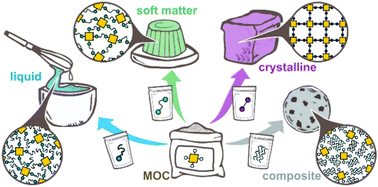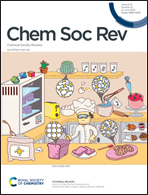Assembling metal–organic cages as porous materials
Abstract
There is growing interest in metal–organic cages (MOCs) as porous materials owing to their processability in solution. The discrete molecular character and surface features of MOCs have a direct impact on the interactions between cages, enabling the final physical state of the materials to be tuned. In this tutorial review, we discuss how to use MOCs as core building units, highlighting the role played by surface functionalisation of MOCs in leading to porous materials in a range of states covering crystalline solids, soft matter, liquids and composites. We finish by providing an outlook on the opportunities for this work to serve as a foundation for the development of increasingly complex functional porous materials structured over various length scales.

- This article is part of the themed collection: ChemSocRev – Highlights from 2023


 Please wait while we load your content...
Please wait while we load your content...